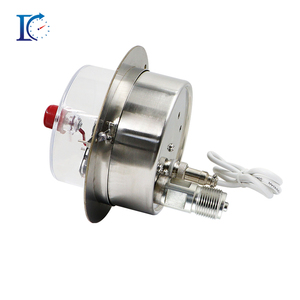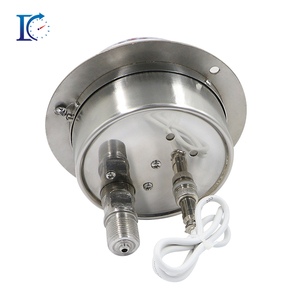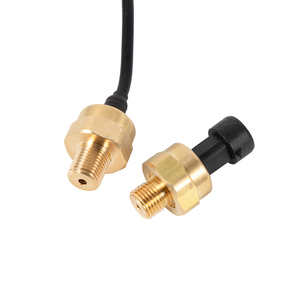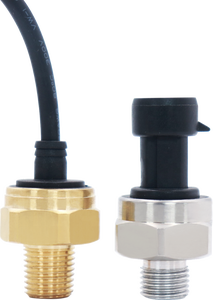
All categories
Featured selections
Trade Assurance
Buyer Central
Help Center
Get the app
Become a supplier

(5152 products available)
























pressure switch use are essential components in various industrial and commercial applications, designed to monitor and control pressure levels within systems. These devices are critical for maintaining safety and efficiency, preventing overpressure or underpressure conditions that could lead to equipment failure or hazardous situations. pressure switch use operate by sensing the pressure within a system and activating or deactivating electrical circuits based on pre-set thresholds. They are widely used in sectors such as manufacturing, automotive, HVAC, and water treatment, among others, due to their reliability and precision.
There are several types of pressure switch use available to suit different applications and requirements. Mechanical pressure switches, for instance, utilize a diaphragm or piston to sense pressure changes and trigger a switch. These are often used in applications where simplicity and cost-effectiveness are priorities. Electronic pressure switches, on the other hand, employ sensors and microprocessors to provide more accurate readings and control. These are preferred in high-precision environments, such as laboratory settings or advanced manufacturing processes. Differential pressure switches measure the difference between two pressure points, making them ideal for filtration systems or flow monitoring. Each type of pressure switch use offers distinct advantages, ensuring optimal performance for specific applications.
pressure switch use are equipped with various functions and features that enhance their utility and efficiency. Key features include adjustable pressure settings, allowing users to customize the switch's activation point according to specific system requirements. Many pressure switch use offer a wide pressure range, typically from 0.1 to 500 bar, catering to diverse industrial needs. Some models incorporate visual indicators or digital displays for easy monitoring and diagnostics. Additionally, advanced pressure switch use may include features such as hysteresis adjustment, which prevents frequent cycling and extends the lifespan of the switch. Other important features include robust construction materials, such as stainless steel or brass, ensuring durability and resistance to harsh environments.
The construction of pressure switch use involves a combination of materials designed to withstand varying pressures and environmental conditions. Common materials include stainless steel, brass, and high-grade plastics, each selected for their strength and corrosion resistance. Stainless steel is favored for its durability and ability to resist oxidation, making it suitable for high-pressure applications. Brass is often used for its excellent conductivity and resistance to wear and tear. High-grade plastics may be incorporated in non-critical components for cost-efficiency and weight reduction. Additionally, advanced pressure switch use may utilize silicon or piezoelectric sensors for precise pressure measurement, enhancing their functionality and accuracy.
To utilize pressure switch use effectively, it is crucial to understand their operational parameters and installation requirements. Proper installation involves connecting the switch to the pressure source and electrical circuit, ensuring that all connections are secure and leak-free. Calibration is essential, requiring users to adjust the switch settings according to system specifications to achieve the desired pressure thresholds. Regular maintenance, including inspection for wear and tear, cleaning, and recalibration, ensures optimal performance and longevity. In applications such as HVAC systems, pressure switch use play a vital role in monitoring airflow and pressure, contributing to energy efficiency and system reliability. Understanding the specific needs of the application and selecting the appropriate type of switch are key to maximizing the benefits of pressure switch use.
Choosing the right pressure switch use for your application involves evaluating several critical factors. First and foremost is the pressure range. It is essential to select a switch that can handle the specific pressure levels of your system, ensuring it operates within safe and efficient parameters. Another consideration is the environment in which the pressure switch use will be used. Factors such as temperature, humidity, and exposure to corrosive substances can affect the switch's performance and longevity. Additionally, the type of electrical connection and compatibility with existing systems should be assessed to ensure seamless integration.
The response time of a pressure switch use is also a crucial factor, especially in applications where rapid pressure changes occur. A switch with a fast response time can help prevent potential system failures or damage. Furthermore, the size and mounting options of the pressure switch use should be considered, as these can influence the ease of installation and maintenance. Lastly, consider the switch's adjustability and calibration features, which are vital for fine-tuning the system to meet precise operational requirements.
Pressure switches are commonly used in various industries, including manufacturing, automotive, HVAC, and water treatment. They play a vital role in monitoring and controlling pressure levels in systems such as pumps, compressors, and hydraulic machines. By ensuring that pressure remains within safe limits, pressure switch use help prevent equipment damage and enhance system efficiency.
To determine the appropriate pressure range for a pressure switch use, it's essential to understand the operating parameters of your system. This includes identifying the minimum and maximum pressure levels that the switch will encounter. Selecting a switch with a pressure range that accommodates these levels ensures reliable performance and prevents overpressure or underpressure conditions.
Yes, many pressure switch use are designed for use in hazardous environments. These switches are constructed with materials and features that provide resistance to extreme temperatures, corrosive substances, and explosive atmospheres. When selecting a pressure switch for hazardous applications, it's important to verify that it meets the necessary safety and industry standards.
Regular maintenance of pressure switch use is essential to ensure their longevity and optimal performance. This includes routine inspections for wear and tear, cleaning of components, and recalibration of settings to maintain accuracy. Additionally, checking for secure connections and any signs of corrosion can help prevent potential failures.
Yes, digital pressure switch use are available and offer several advantages over their mechanical counterparts. These switches provide more precise pressure readings and allow for easy adjustments through digital interfaces. They often include features such as data logging and remote monitoring, enhancing their utility in modern industrial applications.